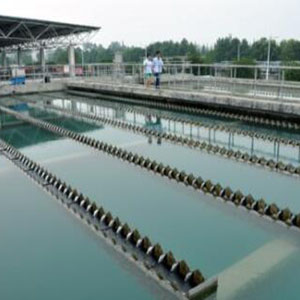
First, let's take a look Activated carbon Performance after film hanging. The activated carbon is generally round after coating. If you touch it with your hand, you will find that the surface of the activated carbon is a little sticky. If you observe it under a microscope at this time, you will find that there are many microorganisms. In this case, the activated carbon is basically coated successfully.
Many people will think that the activated carbon in the water plant is not easy to hang the membrane, because the activated carbon is affected by many factors:
1. The chlorine contained in the raw chlorine water has an inhibitory effect on the growth of microorganisms, which is not conducive to the formation and growth of biofilm.
2. When the PH value is less than 7, the ozone oxidation of chlorine will lead to the formation of chloric acid and perchloric acid ions. When the concentration of chlorine and ozone is low, the shorter the contact time between chlorine and ozone, the weaker the separate inactivation of the two oxidants.
3. When the ambient temperature is higher than 10 ℃, it is more conducive to the formation of biofilm. Especially in summer, the biofilm on activated carbon forms faster.
4. Most microorganisms are more suitable for growing under neutral or weakly alkaline conditions, and controlling the pH of water body at 7-8 is more conducive to the formation of biofilm.
5. Sufficient dissolved oxygen is a necessary condition for the growth and reproduction of aerobic microorganisms. The existence of biofilm impedes the transfer of dissolved oxygen, thus inhibiting the attached nitrifying bacteria. Keeping high dissolved oxygen is conducive to shortening the film hanging time.
So how to hang the membrane of tap water activated carbon?
In the early stage, a certain amount of nutrient solution can be added to the influent. If it is necessary to accelerate the film formation, it can be aerated for a period of time to accelerate the efficiency of film formation.
What is the significance of activated carbon coating?
In the treatment of tap water, the treatment of micro pollutants mainly depends on the microbial degradation of activated carbon layer. Quartz sand, anthracite filter media, etc. are mainly used to prevent the penetration of microorganisms and impurities. After the activated carbon film is mature, the biological degradation of activated carbon is obvious, and the COD removal rate gradually increases and tends to be stable, which can basically be maintained at more than 60%.
